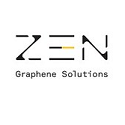
SPONSOR: ZEN Graphene Solutions: An emerging advanced materials and graphene development company with a focus on new solutions using pure graphene and other two-dimensional materials. Our competitive advantage relies on the unique qualities of our multi-decade supply of precursor materials in the Albany Graphite Deposit. Independent labs in Japan, UK, Israel, USA and Canada confirm this. Click here for more information
- A research team at Delft University of Technology has developed a mathematical model that can be used to guide the large-scale production of graphene.
“Our model is the first to give a detailed view of what happens at the micro and nanoscale when graphene is produced from plain graphite using energetic fluid mixing,†says Dr. Lorenzo Botto, researcher at the department of Process & Energy at TU Delft. “The model will help the design of large-scale production processes, paving the way for graphene to be incorporated in commercial applications from energy storage devices to biomedicineâ€.
One of the most promising techniques to produce graphene from graphite is liquid-phase exfoliation. In this technique, graphite is sheared in a liquid environment until layers of graphene detach from the bulk material. The liquid causes the graphene layers to detach gently, which is important to obtain high-quality graphene.
The process has already been successful in the production of graphene on laboratory scale, and, on a trial-and-error basis, on larger scales. It has the potential to be used on industrial scales, to produce tons of material. However, in order to increase the scale of graphene production, we need to know the process parameters that make the exfoliation work efficiently without damaging the graphene sheets.
A research team at TU Delft led by Dr. Lorenzo Botto has developed a mathematical model to determine those parameters. This model can be embedded in large-scale industrial process optimisation software or used by practitioners to choose processing parameters.
“The exfoliation process is difficult to model,†explains Botto. “The adhesion between graphene layers is not easy to quantify and the fluid dynamical forces exerted by the liquid on the graphite depend sensitively on surface properties and geometry.†Team members Catherine Kamal and Simon Gravelle developed and tested the model against molecular dynamics simulations, and proved that that the model can be very accurate. Key to the success of the model is the inclusion of hydronamic slip of the liquid pushing against the graphite surface, and of the fluid forces on the graphene edges
Botto: “The model forms the basis for better control of the technique at any scale. We hope it will pave the way to the large-scale production of graphene for all kinds of useful applications.â€â€
SOURCE: https://www.graphene-info.com/tu-delft-team-develops-model-guide-large-scale-production-graphene